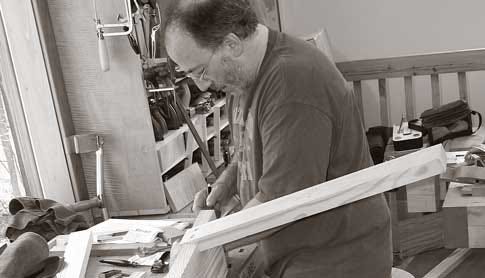Publisher’s note: Good morning and welcome to Earlywood, a free excerpt from one of the thousands of pieces I’ve written since 1996. Sometimes, it’s from a magazine article. Or a book. Or (in this case) a blog post published in 2008. Each entry has been updated or annotated with some modern context or point of view. Enjoy!
It’s 5 p.m. on Sunday, and almost all of the students in my “Precision Handsawing” class are packing up their tools to head home after two punishing days of listening to my drivel while trying to perfect their handsawing.
But in one corner of this picturesque Kentucky classroom, Michael Rogen refuses to stop laying out his half-lap joints. He refuses to lay down his tools and quit. Michael, above all, refuses to lie down, give up and wait to die.
Things are getting worse for Michael. His degenerative disease – its name is unimportant – has claimed most of his mobility, nearly all of his natural dexterity, but absolutely none of his stubborn will to be able to saw, plan…
Keep reading with a 7-day free trial
Subscribe to The American Peasant to keep reading this post and get 7 days of free access to the full post archives.



